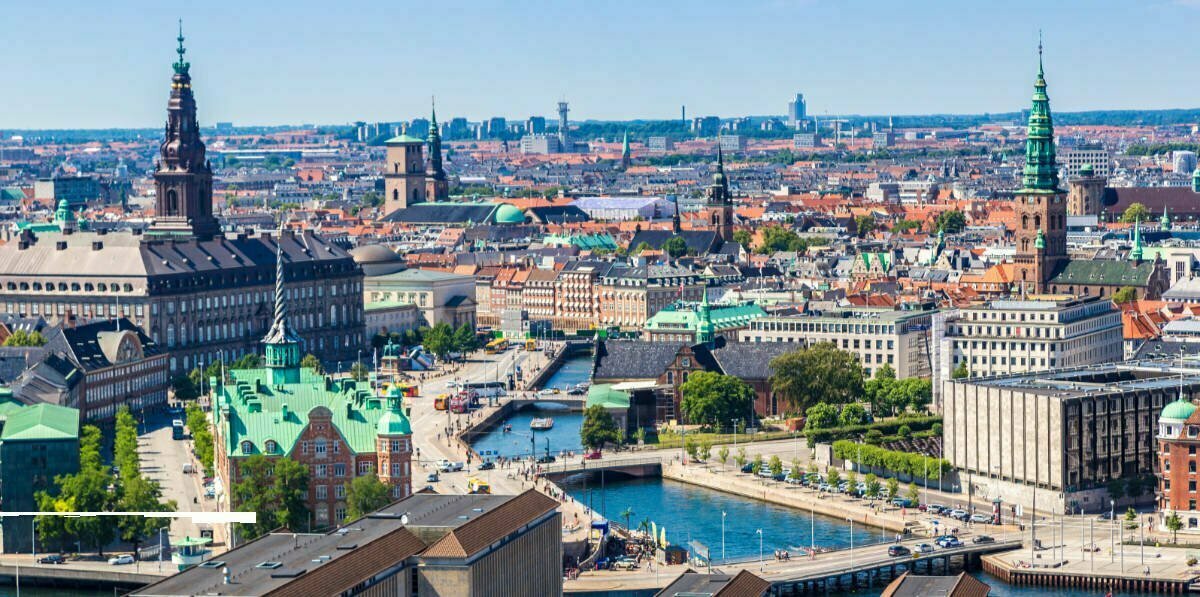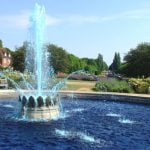
Whenever surveys are conducted on the happiest places to live, Denmark invariably tops the charts. This suggests that Copenhagen must be a joyous place to visit. After all, the locals must be so content for a reason, right?
In truth, Copenhagen is one of the most fascinating cities in Europe. It blends ancient history with contemporary flair, coupled with some of the friendly locals you could hope to meet. Copenhagen should race to the top of any intrepid travellers bucket list.
Before You Fly
If you’re planning a trip to Copenhagen from the UK, you’ll need to make a checklist of your requirements.
Visas and Entry Restrictions
At the time of writing, UK citizens still enjoy the freedom of movement to Copenhagen. Denmark is part of the EU, so you can cross the country’s borders without the need for a Visa, and without restriction as to how long you can stay.
If your passport was issued elsewhere, you may need to apply for a Schengen visa before you can enter Denmark. Take a look to see if this applies to your country of citizenship. If you can’t find your nationality on the list, it’s worth double-checking any travel restrictions with your country’s Danish embassy.
A Schengen visa allows unrestricted movement within 26 European countries that make up the Schengen Area. This territory includes all the Nordic nations, in addition to other popular destinations such as France, Spain, Portugal and Germany.
The rules and restrictions of a Schengen follow the same pattern as most similar documents. You’ll be free to remain in the country for up to 89 days, on the proviso that you remain a tourist. That means not applying for permanent work or looking to take out a long-term residency agreement. If you want to exceed this time in Copenhagen, you’ll need a residency permit.
Currency
Denmark does not officially recognize the Euro. A handful of locations, such as hotels, shops and restaurants in the tourist hotspots, may choose to accept Euros as payment. This is purely at a proprietor’s choice, though.
It’s better to play the game and use the official currency – Danish Krone (DKK). This is also the currency of Greenland and the Faroe Islands, just in case you plan to expand your travelling horizons. Consistency in exchange rates is hard to come by, expect to receive around DKK8.50 for every GBP£1 that you change up.
Copenhagen has a reputation as an expensive city. That’s well earned, but it’s all relative. If you’re visiting from London, used to spending West End prices on food, drink and entertainment, you may find Copenhagen pretty much on par – maybe even cheaper. It’s also generally more affordable than neighbouring Oslo. Recreational goods, such as alcohol and tobacco, are slightly cheaper and Denmark has a strong drinking culture. All the same, Copenhagen is probably best avoided for a stag weekend.
Restaurants and hotels, in particular, are priced at a premium in Denmark. Going self-catering will not save as much as you might think, as basic consumer shopping prices are also at the top of the scale for Europe. You’ll find more budget-friendly ways to amuse yourself if you’re prepared to head off the beaten track, but there is no way around it – you’ll need to steel yourself to spend some money while in Copenhagen.
Climate
As Copenhagen is located in the Oceanic climate zone, the temperatures and conditions can be unpredictable. When packing for a trip to Denmark, it’s best to hedge your bets. Whenever you visit, bring more than just shorts and flip-flops. You’ll never be far from the beach, but it will still be potentially chilly and you could face a downpour at any moment.
Overall, Copenhagen tends to be comfortably cool all year round. The city rarely reaches heatwave status in the summer, but equally, it tends not to become a land of ice and snow in the winter. A typical Copenhagen summer’s day will see temperatures peak in the 20s, but you’ll also feel a cool sea breeze from the sea and the skies may be overcast. July is usually the hottest month.
During the winter, the ambient temperature will often drop to around freezing. That’s not quite as bracing as you might fear. Most people will be comparatively comfortable strolling a Christmas market, as long as appropriate attire is chosen. Temperatures plunge further in January though. You’ll really feel the sea breeze when it’s coupled with a cold climate.
Language
While Danish is unsurprisingly the native language of Copenhagen, Denmark leads the world in terms of foreign English speakers. Many Danes also speak a third and fourth language, with German being particularly popular.
Danish can be a tough language to learn but give it a shot. Most residents of Copenhagen will communicate in English without complaint, but it can grow frustrating when visitors simply assume this is the case. Attempting to speak the native tongue, even if you mangle the language, will raise a smile.
Insurance
Denmark has one of the most celebrated healthcare systems in the world. Unfortunately, free treatment is restricted to citizens and employees of the country. It’s not quite the same as the NHS, but more like the American system of Medicare – co-pays are taken from a monthly salary of Danish employees.
A Danish hospital will never refuse emergency medical care, but you should really take out a travel insurance policy and a European Health Insurance Card (EHIC) from the NHS before you visit. The latter will drastically reduce any expenses pertaining to a healthcare emergency, while the former will take care of anything else.
Getting to Copenhagen
You can access Copenhagen by air, rail or sea from the UK. Obviously flying is much faster. You can take a more scenic route if that’s your preference and you have a spare 24 hours, though.
Flying typically takes less than two hours. There is a wide range of British airports and airlines that service Copenhagen, so you’ll have the choice of luxury or a no-frills budget option.
The Eurostar rail service covers Copenhagen, but not directly from London or Kent. You’ll need to carve out two days for travel, as an overnight stay will be required in another European city. It’s logistically impossible to make the trip on the same day.
Start your journey at London St. Pancras and book a train to Brussels. From here, take a train to Germany. You can pick Cologne or Hamburg – the choice is yours. From Germany, you can take the train straight to Copenhagen. As discussed though, you’ll need to spend the night in Brussels, Cologne or Hamburg before continuing an onward journey in the morning.
If you prefer to take a leisurely boat cruise, you’ll need to head to the Lincolnshire town of Immingham. From here, DFDS Seaways operates six weekly cruises to Esbjerg that take roughly eighteen hours. This large seaport town is around three hours away from Denmark.
Where to Stay in Copenhagen?
Copenhagen is packed with interesting nooks and crannies to explore. It’s also an easy city to negotiate. Don’t limit yourself to staying in the very heart of the city centre. You’ll pay a small fortune for the privilege, and potentially miss out on some fascinating local culture.
Vesterbro should be the first place anybody looks for accommodation in Copenhagen. This used to be Copenhagen’s red-light district, but it has long since cleaned up its act. Nowadays, Vesterbro is at the beating heart of Copenhagen’s creative industries. It’s just outside the city centre, so you’ll have easy access to travel, but it’s also packed with markets, galleries and restaurants. If you shop around you’ll also find a cost-effective hotel in this part of the city.
If you’re really looking to cut down on your spending, however, station yourself in Copenhagen’s Latin Quarter. This location is still pretty central, and it’s home to the University of Copenhagen. Where there are students there are deals to be found, and the Latin Quarter is no exception. It’s also close to Indre By, aka Old Town. This is the beating heart of Copenhagen, where you’ll find the majority of tourist attractions and nightspots. You could save money by staying in the Latin Quarter, spending it instead in Indre By.
If you’re prepared to spend a little more, and you’re looking for a cultural holiday, consider Frederiksberg. This is actually its own municipality, hosting most of the city’s major theatre productions. There are also plenty of places to eat. For a more mainstream experience, switch Frederiksberg for Nyhavn. This family-friendly locale is highly picturesque and contains countless entertainment options for travellers of all ages. It’s arguably the best location for anybody visiting Copenhagen with children in tow.
Getting Around Copenhagen
Driving is not the default method of transport in Copenhagen. You could hire a car, but parking spaces are limited and costly. Similarly, taxis are fairly plentiful but are expensive.
You will be better served by hiring a bike, walking on foot, or learning the plentiful public transport options. Don’t panic. Even though Copenhagen is the capital city, it is not hugely spaced out. You’ll be surprised at much ground you can cover by pounding the pavement.
However, when you arrive in the city, pick up a Copenhagen Card. This is an all-access pass to Copenhagen’s entire public transport system. Price points for a Copenhagen Card are:
- 24 Hours – DKK419 (£50) for adults, DKK209 (£25) for children
- 48 Hours – DKK619 (£74) for adults, DKK309 (£38) for children
- 72 Hours – DKK759 (£90) for adults, DKK379 (£45) for children
- 96 Hours – DKK889 (£106) for adults, DKK449 (£54) for children
- 120 Hours – DKK999 (£119) for adults, DKK499 (£60) for children
A Copenhagen Card will also grant free access to most of the city’s tourist attractions. It even provides discounts in certain restaurants. Any paying adult can also include a child under 10 on their Copenhagen Card. The investment pays for itself, and more besides, before long.
Things to Do in Copenhagen

Image: kavalenkava/Shutterstock.com
If you’re a fan of bearded men, mead and tales of derring-do, Copenhagen is paradise. Much of the culture in this city revolves around the nation’s Viking history. There are plenty of other things to see in and do, though.
Art and Culture
The first stop for anybody looking to steep themselves in Danish culture should be the National Museum of Denmark. As intimated, the exhibits here focus primarily on Viking treasures and experiences.
If you’re a lover of the arts, you owe it to yourself to explore Copenhagen’s Royal Theatre. This building is divided into three sub-auditoriums – the Opera House, the Playhouse and the Old Stage. The first two locales are self-explanatory, while the third is dedicated to ballet. Copenhagen takes its culture seriously, so tickets are subsidised – you can enjoy world-class theatre for a fraction of the price of the West End.
Literary enthusiasts will relish the many references to Hans Christian Andersen throughout Copenhagen. The famous Little Mermaid statue stands proud in Langelinie, while the author is lionised in his former home district of Nyhavn.
For a more traditional experience, spend some time in Old Town and Vesterbro. You’ll find no shortage of live music here. Old Town will play host to bigger names that you may be familiar with, while Vesterbro is a hipster’s playground. You’ll find live performances in many independent record shops, making the area a music lover’s nirvana.
Sport and Outdoor Events
Copenhagen isn’t really a city for outdoor event purists. You’ll be able to head to the beach for a little watersport, but that’s about it. There are no notable mountains to climb or ski slopes to conquer.
If you enjoy watching live sport, however, Copenhagen has you covered. Football is hugely popular throughout Denmark, and the capital city is home to the national stadium, Telia Parken. You can take in an FC Copenhagen match here.
Denmark also invented the sport of handball, which is a close second to soccer in popularity. Handball is played in indoor arenas all over Copenhagen. You’ll also find plenty of golf courses dotted throughout the city.
Local Curiosities
No trip to Copenhagen will be complete without spending a little time in Christiania, the city’s free neighbourhood. Christiania is not governed by Danish laws and regulations, operating under its own anarchist principles.
There are just three rules in Christiana – no running, no photographing residents without permission, and no trading in illegal drugs. Pusher Street used to be exactly what it sounds like, but a compromise has been reached with the authorities at large.
Christiania was founded in 1971. It was a barricaded military barracks, but a group of individuals forced entry and began squatting. To this day, around 900 people that live outside of cultural norms still live in Christiana. You will not really want to stay here, but it’s a lot of fun to visit.
This concludes our brief UK travellers guide. While you are here why not check out our other Scandanavian travel-related articles.
Header Image: S-F/ Shutterstock.com





